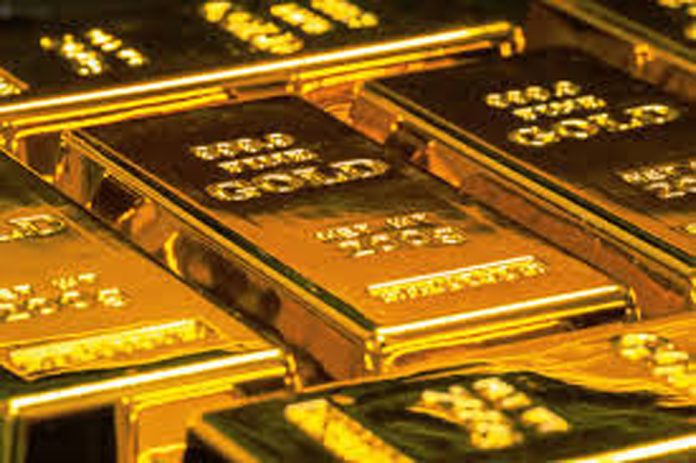K Raveendran
Gold has touched$2,500 an ounce for the first time ever, marking a historic milestone in the precious metals market, a development with profound implications both globally and particularly for India, where gold holds significant cultural and economic importance. The unprecedented surge can be attributed to a confluence of factors that have reshaped market dynamics and investor sentiment.
At the core of this phenomenon is the persistent inflationary pressure felt worldwide. Inflation, driven by a combination of robust economic stimulus measures, supply chain disruptions, and rising costs of raw materials, has led to heightened uncertainty about the future purchasing power of fiat currencies. Gold, traditionally viewed as a hedge against inflation, has thus seen increased demand from investors seeking to preserve wealth amidst these economic uncertainties. When inflation expectations rise, the appeal of gold as a store of value intensifies, and the surge to $2,500 an ounce is a direct reflection of this heightened demand.
Moreover, central bank policies have played a pivotal role in gold’s ascent. In response to economic challenges and to stimulate growth, many central banks have maintained low interest rates and engaged in extensive monetary easing. Such policies often lead to lower yields on traditional investments like bonds, making gold—a non-yielding asset—more attractive in comparison. When interest rates are low, the opportunity cost of holding gold diminishes, further driving up its demand. The current environment, marked by protracted low interest rates and expansive monetary policies, has thus provided a favourable backdrop for gold’s price surge.
Global geopolitical tensions have also contributed significantly to gold’s rally. Political instability, trade conflicts, and regional tensions often prompt investors to seek refuge in safe-haven assets like gold. Recent geopolitical developments, including ongoing conflicts and economic sanctions, have heightened market uncertainties and fuelled gold’s rise. Investors flock to gold as a safeguard against potential geopolitical risks, pushing its price higher as a result.
In addition to these factors, the strength of the U.S. dollar has been a crucial element influencing gold prices. Typically, gold prices exhibit an inverse relationship with the value of the dollar. When the dollar weakens, gold becomes cheaper for foreign investors, which can boost demand and drive up prices. Recent fluctuations in the dollar’s strength, influenced by various macroeconomic factors, have thus played a role in the gold market’s dynamics.
For India, the world’s second-largest consumer of gold, the impact of this price milestone is particularly significant. Gold’s role in Indian society extends far beyond its function as a mere investment asset. It is deeply embedded in cultural traditions and is a key component of various ceremonies and rituals. As such, fluctuations in gold prices have wide-ranging implications for both the economy and the cultural fabric of the country.
The price spike presents a dual-edged sword for the Indian gold market. On one hand, the higher prices can be seen as a reflection of economic stability and an indicator of investor confidence in gold as a valuable asset. Indian investors, who traditionally view gold as a safe investment and a hedge against inflation, may find the higher prices indicative of continued economic uncertainty, prompting them to allocate more funds into gold. This increased demand can drive up domestic gold prices, influencing investment patterns and savings strategies.
On the other hand, the sharp increase in gold prices poses challenges for the Indian market, particularly in terms of affordability. Gold has long been a staple of Indian weddings and festivals, and the price surge can strain household budgets and impact consumer spending on gold-related items. For many Indian families, the rising cost of gold may lead to adjustments in traditional practices, such as scaling back on purchases or opting for lighter jewellery. This shift can affect not only consumer behaviour but also the overall dynamics of the domestic gold market.
Higher gold prices directly translate into increased costs for jewellery manufacturers and retailers. This can lead to higher prices for consumers, potentially dampening demand and affecting sales. Retailers may face challenges in maintaining profit margins while balancing the need to attract price-sensitive customers. Additionally, the volatility in gold prices can lead to fluctuations in inventory costs and profit margins, impacting the stability and growth prospects of businesses within the industry.
The rise in gold prices also has implications for India’s trade balance. As a major importer of gold, India must contend with the higher costs associated with purchasing gold from international markets. This can strain the country’s trade deficit and impact foreign exchange reserves. The increased expenditure on gold imports could lead to adjustments in trade policies or influence currency exchange rates, further affecting the broader economic landscape.
There are potential upsides as well. The surge could spur greater interest in gold-backed financial products, such as gold ETFs and sovereign gold bonds. These instruments provide investors with a way to gain exposure to gold prices without the need to physically buy and store gold. The growth of these financial products can offer new avenues for investment and contribute to the development of more sophisticated financial markets in India.(IPA


